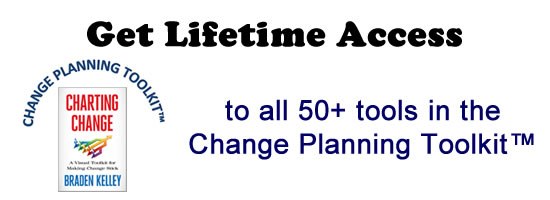How Do You Make It Difficult For The Competition To Copy?

Businesses can get so wrapped up in all the excitement of an innovation idea they tend to give very little time to what the competition might do once the innovation has launched. Instead it gets waved aside with justifications like:
- “The trade and consumers will stay loyal to the first to market.â€
- “It will take the competition months/years of R&D to launch.â€
- “It’s a distraction, you can’t predict what the competition will do.â€
But there is a reason behind the saying “Pioneers often die with arrows in their backs.†Don’t be fooled; the competition will be very persistent and be far better than you think possible.
Why The Competition Will Be Hot On Your Heels

1. Inputs Are Very Similar
Businesses tend to read the same publications, buy the same data/ trends, use the same insight methodologies and source from the same suppliers. If you have had the idea, the odds are the competition has had the same idea based on the very similar inputs.
2. It’s Likely They Will Have Tried To Validate It Before
If it is a potentially strong idea it is highly likely that they will have researched it too. And the reason that they haven’t launched will be that they didn’t get the insight and execution (claims, semiotics, need states etc.) right so it bombed. Or the idea might have been ahead of its time. Basically; they couldn’t make it work. They didn’t or couldn’t get the building blocks in the right order.
3. There Is A High Probability They Have A Prototype
Most businesses waste vast amount of R&D resources on product development before going anywhere near assessing/ researching the idea with potential customers. So, there is a strong probability that they will not be starting at ground zero, and probably have a prototype sitting on a theoretical ‘dusty shelf’.
What Can You Do To Slow The Competition Down?

So. They will follow faster than you think. How do you use decoys to make it as difficult as possible for your competition to follow?
Basically, it all comes down to employing some divergent thinking and ensuring that all possible angles are explored and covered prior to launch. Here are some common tactics. Not all will apply to every marketplace or innovation type but it should give a good starting point and enable some serious food for thought:
The Key Problem To Be Solved
There is often more than one use or angle to an innovation and it is important that you are aware of all of them prior to launch. This is the weakness that is most often leveraged and preyed on by the competition. An innovation is pitched to solve a problem but businesses don’t realise that it is not the most compelling one. The competition re-angle the proposition, take advantage of some tunnel vision thinking and make the innovation far more compelling. (For further reading, try our article on Concept Optimisation.)
Naming
When it comes to category changing innovation or behaviour, having a name that instantly communicates the idea is extremely powerful. Potential customers do not have to apply much effort to understand what the idea is, so it makes it a major competitive advantage. We always advise our clients to not only trademark a ‘does what it says’ name but also to register any other possibilities to block out the competition.
Semiotics
We are all governed by the semiotics of colour, form and iconography. Tapping into this symbolism can mean that you can communicate subconsciously what an innovation is and what it is for, faster and on a deeper emotional level.
Taking ownership of the right colours and symbols means that the competition will be either forced to copycat you or differentiate. Thus, they have a weaker subconscious connection. Either way, it puts them in at a disadvantage.
Benefits & Claims
How powerful is your purchase persuasion? Are you making the right argument and supporting it with reasons to believe that ‘cut the mustard’? So many times we see businesses make assumptions around what could be the most persuasive angles for an new innovation. They become blind to the fact there are lots of potential benefits and claims to explore. Not to mention the variety of ways you can express them. (How to Develop Claims Effectively.)
So, they end up doing all the ground work of educating customers and the trade, only for a competitor to enter with a product or service that makes a stronger argument around ‘more’, ‘less’, ‘faster’ etc. Or even changes the playing field by finding a completely different angle that is more compelling.
The Type Of Change
It is vital that there is a clear understanding of the type of change required for people to purchase a new innovation. Is education required to change a belief or perception? Is it a behavioural or ritual change?
If you can get to the bottom of exactly what needs to be shifted in peoples’ everyday lives for your innovation to take its place, then momentum can be gained quickly. And in today’s digital, social environment a new innovation does not need to have vast marketing or trade budgets.
Establishing an innovation fast is one of the best ways to outmanoeuvre potential competitors. Because once people find a place in their lives for a new product or service they tend to be fiercely protective of it. To achieve this, knowing the type of change that needs to be fostered and then majoring on it is key.
Strategic Partners
Are there key players in the marketplace that you can partner with? For example suppliers, retailers, accessories, add-ons? By creating this spiders web of connections, it can lock out the competition.
Can you supply a secondary competitor through white labelling as well as launching a branded innovation? This way you can have some element of control, build awareness of the innovation faster and leave less room for a true rival competitor.
The use of strategic partners in innovation can be great competitive blocking tool and is well worth considering.
To Conclude
Do not underestimate how fast the competition will react if you have a good idea. Right from the start of any innovation idea, it is good practice to be erecting as many roadblocks as possible to slow down the competition. This involves doing your research thoroughly and employing lots of divergent thinking. So, the emphasis should be on ensuring the business has thought of all the possible solutions around an innovation idea prior to launch. Not, as might be tempting, to just concentrate on the one solution the business is focused on taking to market.
Make life difficult for your competition. Talk to us.
This blog was originally posted on The Strategy Distillery website here
Wait! Before you go…
Choose how you want the latest innovation content delivered to you:
- Daily — RSS Feed — Email — Twitter — Facebook — Linkedin Today
- Weekly — Email Newsletter — Free Magazine — Linkedin Group
 Shelly Greenway is a front-end innovation strategist and partner at The Strategy Distillery – a brand innovation consultancy that specialises in opportunity hunting and proposition development. Their success rates are driven by their proprietary consumer co-creation IP. Follow @ChiefDistiller
Shelly Greenway is a front-end innovation strategist and partner at The Strategy Distillery – a brand innovation consultancy that specialises in opportunity hunting and proposition development. Their success rates are driven by their proprietary consumer co-creation IP. Follow @ChiefDistiller
NEVER MISS ANOTHER NEWSLETTER!
LATEST BLOGS
Three things you didn’t know about credit cards
Photo by Ales Nesetril on Unsplash Many of us use credit cards regularly. From using them for everyday purchases to…
Read MoreFive CV skills of a business-minded individual
Photo by Scott Graham on Unsplash The skills listed on a CV help employers quickly understand your suitability for a…
Read More


